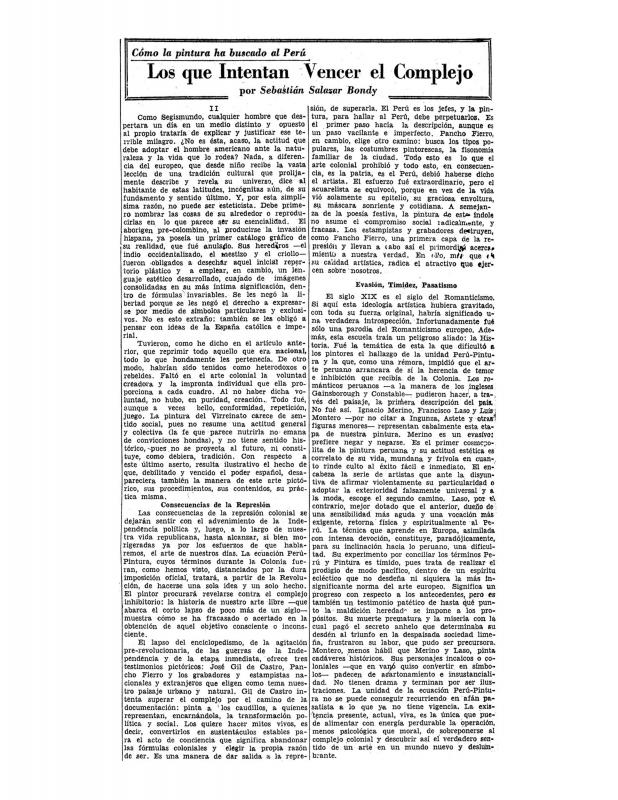This was the second article by the Peruvian Modernista architect, Luis Miró Quesada Garland [(1914–1994)], published in his weekly column, “En blanca y negra” [In Black and White] in the Lima daily newspaper, El Comercio. It was written at the height of one of the debates between those who supported art for art’s sake and those who believed in art with a social commitment [see also documents: # 1151027, 1138736, and 1138790]. The specific problem addressed in this article is nationalism in painting. There had already been Modernista discussions held on this issue, started in June 1951 by the painter, Fernando de Szyszlo (Lima, born in 1925). In response, the critic, Samuel Pérez Barreto (Lima, 1921–2003), defended terrestrial, Abstract art as the only art that could be both “Peruvian” and modern. Nevertheless, the debate would be continued right through the decade between a program-driven, figurative, nationalist art and an Abstract art language, with no commitment beyond art. The tensions between the visual arts and nationalism would even be projected into the past by the writer, Sebastián Salazar Bondy (1924–1964). On September 12, 1955, under the title, “Cómo la pintura ha buscado al Perú” [How Painting Sought Peru], Salazar Bondy gave a lecture in which he outlined history around this theme, starting with the equation “Perú-pintura” [Peru-painting]. One of the clearest, most confident interrogations of the nationalist discourse was presented by Luis Miró Quesada Garland—a leading ideologist of Peruvian artistic and architectural Modernismo. He would ironically allude to this equation as a contradiction in terms—comparing a political concept with an artistic one. Salazar Bondy’s response would generate a significant exchange, including the publication of his lecture in three parts [See documents: # 1138058, 1138075, and 1138092]. Among other subjects, in these articles, he set forth his negative comments on Peruvian Vice-Regal art, which he would later expand in his book-length essay, Lima la horrible [Lima, the Horrible] (1964), a touchstone for the generation of 1960. Actually, the debate about nationalism in art had already led to a confrontation between Miró Quesada and Salazar Bondy a year earlier, in 1954.






